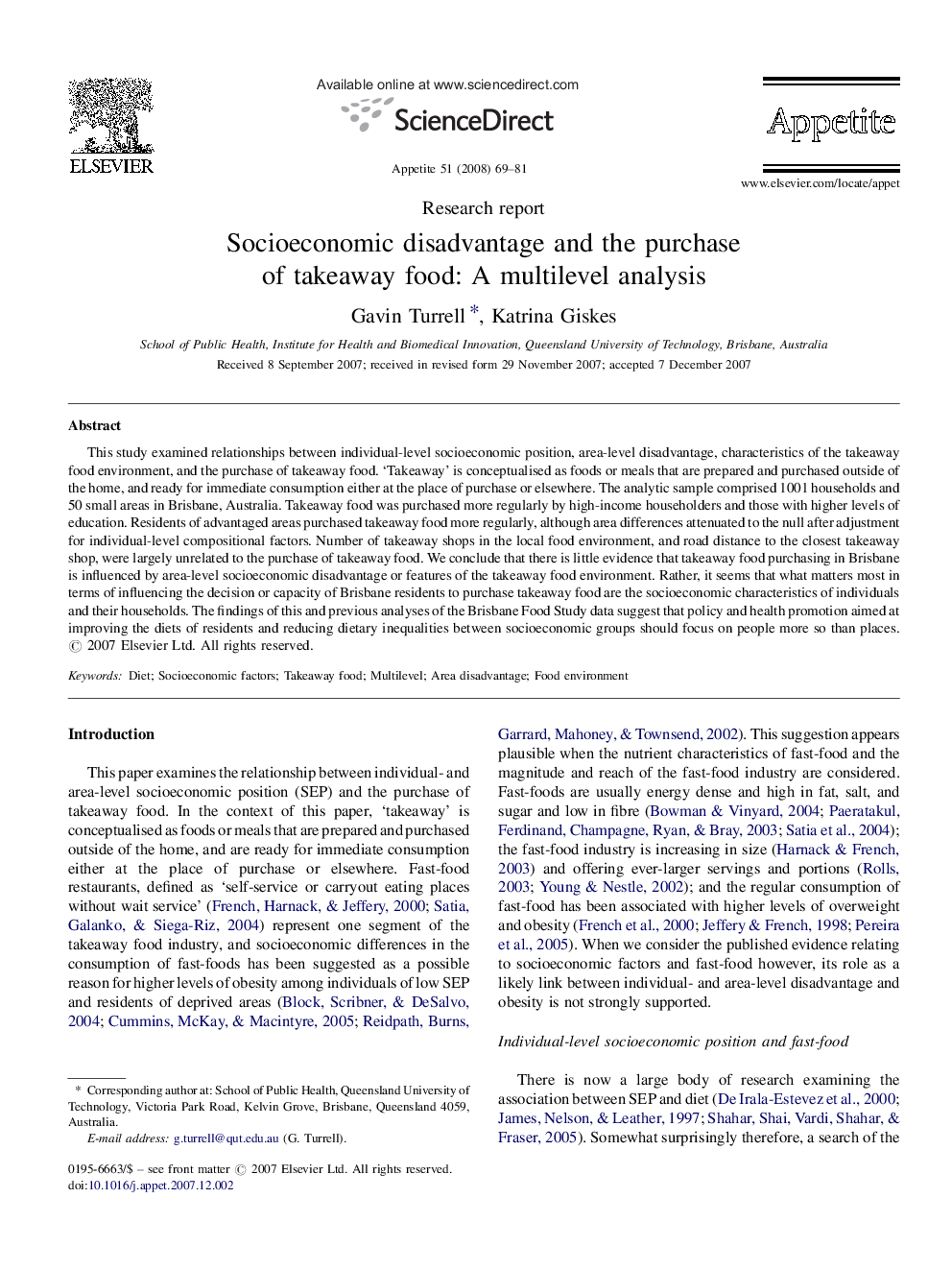| Article ID | Journal | Published Year | Pages | File Type |
|---|---|---|---|---|
| 941520 | Appetite | 2008 | 13 Pages |
This study examined relationships between individual-level socioeconomic position, area-level disadvantage, characteristics of the takeaway food environment, and the purchase of takeaway food. ‘Takeaway’ is conceptualised as foods or meals that are prepared and purchased outside of the home, and ready for immediate consumption either at the place of purchase or elsewhere. The analytic sample comprised 1001 households and 50 small areas in Brisbane, Australia. Takeaway food was purchased more regularly by high-income householders and those with higher levels of education. Residents of advantaged areas purchased takeaway food more regularly, although area differences attenuated to the null after adjustment for individual-level compositional factors. Number of takeaway shops in the local food environment, and road distance to the closest takeaway shop, were largely unrelated to the purchase of takeaway food. We conclude that there is little evidence that takeaway food purchasing in Brisbane is influenced by area-level socioeconomic disadvantage or features of the takeaway food environment. Rather, it seems that what matters most in terms of influencing the decision or capacity of Brisbane residents to purchase takeaway food are the socioeconomic characteristics of individuals and their households. The findings of this and previous analyses of the Brisbane Food Study data suggest that policy and health promotion aimed at improving the diets of residents and reducing dietary inequalities between socioeconomic groups should focus on people more so than places.
